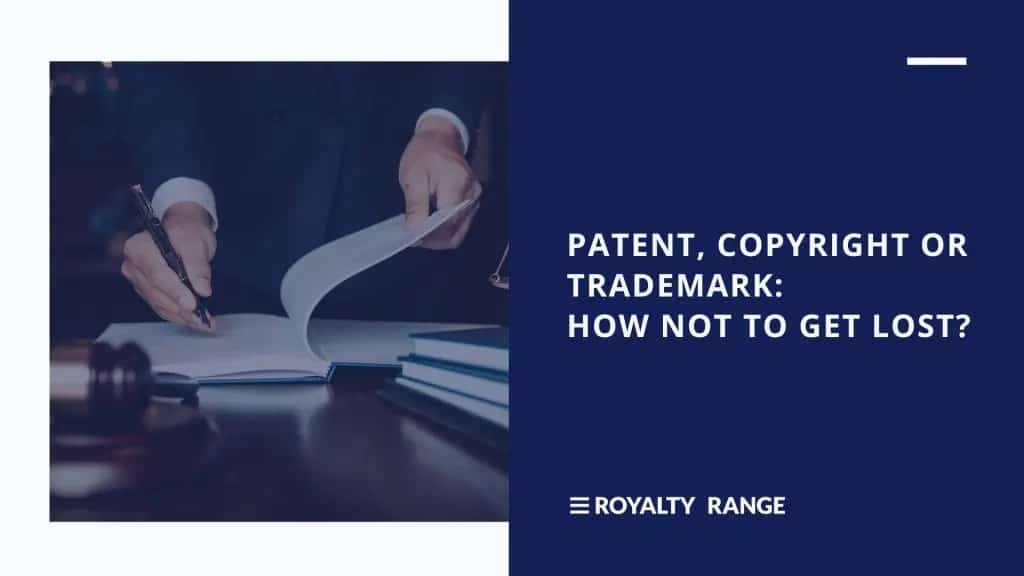Patent, copyright or trademark: how not to get lost?
February 16, 2023

WHAT’S WHAT
According to the World Intellectual Property Organization (WIPO), a patent is an exclusive right granted for an invention, which is a product or a process that provides, in general, a new way of doing something, or offers a new technical solution to a problem.
A copyright is a legal term used to describe the rights that creators have over their literary and artistic works. It can be not only books, music, paintings, sculpture, and films, but also computer programs, databases, advertisements, maps, and technical drawings.
A trademark is a sign capable of distinguishing the goods or services of one enterprise from those of other enterprises. United States Patent and Trademark office (USPTO) notes that it can be described as any word, phrase, symbol, design, or a combination of these things that identifies your goods or services, and it’s how customers recognize you in the marketplace and distinguish you from your competitors.
THE SCOPE OF LEGAL PROTECTION
There is no better way to understand the differences between patent, copyright and trademark than to analyze what is legally protected by each of these intellectual property types. We believe that this short analysis will help You not to get lost.
Let’s review each of them:
Patent protects technical inventions, such as mechanical processes or chemical compositions that are new and unique in some type of industry.
This type of intellectual property provides a protection when patent owner has the exclusive right to prevent or stop others from commercially exploiting the patented invention. In other words, patent protection means that the invention cannot be commercially made, used, distributed, imported or sold by others without the patent owner’s consent. USPTO remarks, that what is granted is not the right to make, use, offer for sale, sell or import, but the right to exclude others from making, using, offering for sale, selling or importing the invention.
According to WIPO, copyright protection extends only to expressions, and not to ideas, procedures, methods of operation or mathematical concepts as such. Copyright may or may not be available for a number of objects such as titles, slogans, or logos, depending on whether they contain sufficient authorship. It is important to note that exhaustive lists of works covered by copyright are usually not to be found in legislation.
And finally, trademark, as an IP type, gives a protection to a word, phrase, design, or a combination that identifies your goods or services, distinguishes them from the goods or services of others, and indicates the source of your goods or services. Also, USPTO notes, that trademark isn’t limited to one good or service – it can be used with many different goods or services. Remember: You can legally prevent others from using the same or a similar trademark for related goods or services without your permission.
In short, a patent refers to the invention, usually mechanical process or composition, a copyright is related to expression, and a trademark is a word, phrase, design, or a combination of these.
Our royalty database contains a broad range of licensing agreements granting rights to patents, trademarks and copyrights. Our lawyers use additional sources, such as PATENTSCOPE and Global Brand databases to enrich the analysis and provide you with premier quality data. You will be provided with a full package of patents/trademarks data since our comparables include the description of extent and duration of legal protection, patent/trademark numbers, synopsis, links and images. This data is well-organized, easy-to-use and highly rated by our clients. Let’s get in touch.




